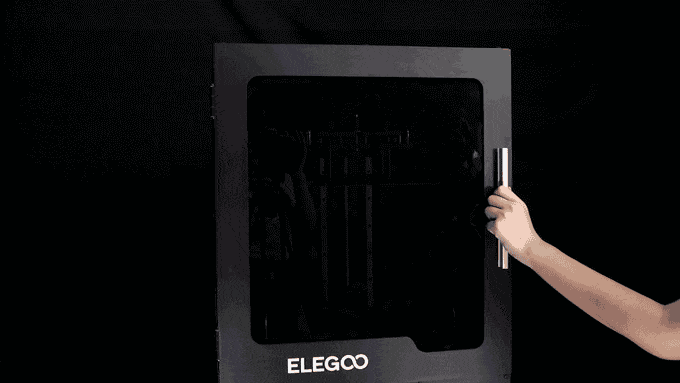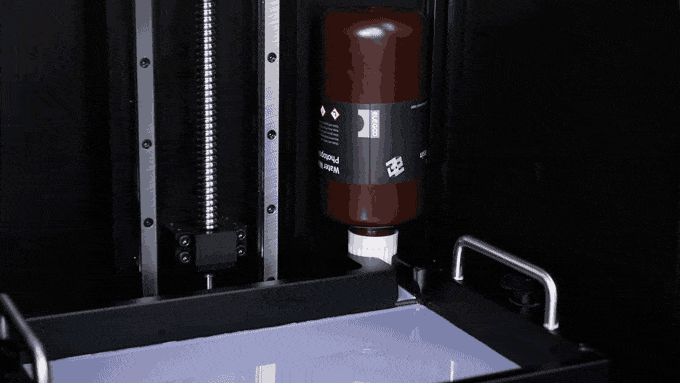Let’s talk about resin 3D printing for a moment. I am a user of fused deposition modeling (FDM) 3D printers. I like the substantially larger volume of FDM printers as compared to stereolithography (SLA) and digital light processing printers. Part of the fun of making 3D prints for me is being able to fabricate objects as large as I want. I’ve made wall mounted projects that have taken 13 days to print. They would be impossible on most resin printers or would take substantially longer than I care for.
However, resin printers do offer a cleaner, higher resolution print than filament systems, so I wanted to try them. I recently purchased an ELEGOO Mars 2 Pro. ELEGOO is one of the more prominent names in low-cost resin machines. Their brand vision is unadorned: “With the help of programming and 3D printing technology, we can create almost anything—ELEGOO provides geeks with the keys to a new world.” ELEGOO has built a rather large brand and following of around 100,000 community members across more than 30 countries/regions around the world by providing low-cost 3D printing products.
Using the Mars 2 Pro did not go well. I tried 13 different prints, and 13 of them failed, including the test print that comes standard with the machine. I don’t know if I received a defective printer, or if I could not establish the correct settings. In any event, it was an abject failure. For all my FDM printers, I’ve been able to take them out of the box and start printing on them immediately. The other concern I had was the overall safety of the resin material itself. It tended to get everywhere when I was trying to work with it and made a mess out of my kitchen.
After this experience, I had given up on resin systems—until now. ELEGOO has just started their latest Kickstarter for the ELEGOO Jupiter, and there are several innovative features that are present in the Jupiter that have caught my attention.
The print volume of an ELEGOO SLA printer is anywhere from 129mm x 80mm x 160mm (ELEGOO Mars line) to 192mm x 199.898mm x 120mm (ELEGOO Saturn). The Saturn line has a 2K Monochrome resolution and the Mars has a 4K Monochrome resolution. This is important because it controls the speed of your prints.
As you might have guessed by now, the Jupiter makes all of those look tiny by comparison. The build volume on the Jupiter is 277.848mm x 156.06 mm x 300mm. As you can see in the photo, the Jupiter dwarfs their previous models. Not only is the build volume significantly larger, but it also includes a super-sized 12.8” 6K LCD resolution.
With such a substantial LCD screen upgrade, you can anticipate even higher model quality than current resin systems on the market. This, is turn, diminishes the square edges that can occasionally happen on lower-resolution printers. The high pixel density has been engineered to produce high-resolution models. The large size of the masking LCD presents people with the ability to print large models, multiple smaller objects and anything in between.
On the earlier SLA printers, you would have to pour your liquid resin into a resin tank, hope that it was enough for larger prints, or keep checking on it to try and refill the tank while printing. Both options are not ideal. ELEGOO has fixed this, as well. The Jupiter has an automatic resin tank feeding inlet that allows the photopolymer to fill in the tank anytime it is running low during a print.
There are other features they’ve added, as well, such as an all-metal structure, a five-inch capacitive touch screen, built-in mini air purifier, and a one-year CHITUBOX Pro license. These are all great upgrades to the design and functionality of the machine.
With the vastly enhanced build volume and the 6K LCD screen, I am seriously reconsidering my stance on resin printers. Right now, the Jupiter is available on its Kickstarter page for $740 (43.08% off of the $1300 MSRP) on up. You should hurry though, as the early backer rewards have already sold out. I hope you have a better experience with resin printing than I did.
Subscribe to Our Email Newsletter
Stay up-to-date on all the latest news from the 3D printing industry and receive information and offers from third party vendors.
You May Also Like
IperionX Inks 10-Year Deal with Wisconsin Manufacturer for 80 Metric Tons of Titanium Per Year
IperionX, the Charlotte-based supplier of sustainable titanium powders used for additive manufacturing (AM) and metal injection molding (MIM), has signed a ten-year deal with United Stars, a group of industrial...
Gastronology Launches Industrial Production of 3D Printed Food for Dysphagia Patients
Food 3D printing has, in many ways, been an additive manufacturing (AM) segment looking for the right business case. While some applications are beautiful and others may or may not...
Lockheed Martin Leads $3M Investment in Q5D’s Electronics 3D Printing System
Q5D, an original equipment manufacturer (OEM) of robotic arm, hybrid additive manufacturing (AM) systems used for wire harness production, has closed a $3 million investment round. The investment arm of...
3D Printing News Briefs, April 6, 2024: Depowdering, Cybertruck Door Handles, & More
In today’s 3D Printing News Briefs, ioTech’s digital manufacturing CLAD technology is opening up opportunities for microelectronics and additive manufacturing. Hexagon and Raytheon Technologies commercially released the Simufact Additive Process...



































